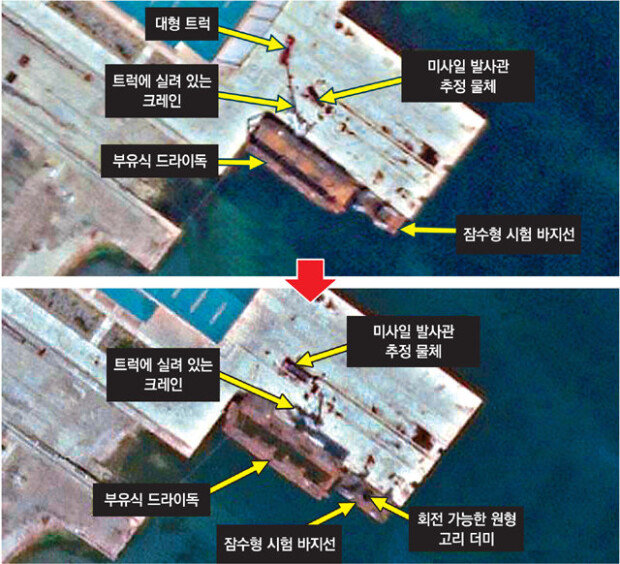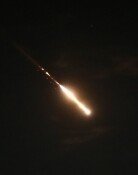U.S.,S. Korea: KN-23 shows irregular trajectory including pull-up maneuver
U.S.,S. Korea: KN-23 shows irregular trajectory including pull-up maneuver
Posted April. 12, 2021 07:46,
Updated April. 12, 2021 07:46

The U.S. and South Korean intelligence officials are found to have concluded that North Korea’s new short-range ballistic missile KN-23, modeled after Russia's Iskander, made a pull-up maneuver during the descent phase. The KN-23 had been launched from Yonpo Airfield in the town of Hamju, South Hamgyong Province on March 25. Analysts believe that the missile evaded the surveillance network and flew some 600 kilometers as the North says.
According to a government insider on Sunday, intelligence officials of the U.S. and South Korea tentatively concluded that the missile made a pull-up maneuver after analyzing its trajectory in the final descent stage captured by satellites and radar of the U.S. and Japan as well as the trajectory in the ascending stage captured by South Korean military. The two countries concluded that it showed a more complicated path including a sudden pull-up after a level flight at a lower altitude with a small-size thruster to control thrust and direction.
Based on the General Security of Military Information Agreement, the intelligence pact between the U.S. and Japan, information has been shared with Japan as well. Its flight distance was 450 kilometers on the radar of South Korea’s military, but the North asserted that it flew 600 kilometers, saying that it reaffirmed "the irregular orbit features of low-altitude gliding leap type flight mode already applied to other guided projectile” on the next day. It reached the highest altitude of 60 kilometers before started to descend and showed irregular operation while flying some 150 kilometers at an altitude lower than 20 kilometers. When some pointed out that the earth curvature may have been the reason why the military missed it, the military announced that it was analyzing and assessing the projectile.
The missile flew about 600 kilometers, the same distance as KN-23 launched in Hodo-bando, South Hamgyong Province in July 2019. The North launched KN-23 only twice, which flew 600 kilometers in both occasions. “It seems that Pyongyang tested the maximum distance in both tests,” said an expert. “The distance was the same, but the new missile greatly improved its striking power by increasing the warhead weight more than twice and loading a tactical nuclear weapon.”
In the meantime, the three Aegis ships were not mobilized when the new missile was launched. Normally, one carries out missions while the other two are anchored for maintenance, but at the time of the missile launch, all three of them were anchored. Some point out that this could have been the reason why the radar failed to detect the missile early on and mistakenly judged the flying distance.
Sang-Ho Yun ysh1005@donga.com







